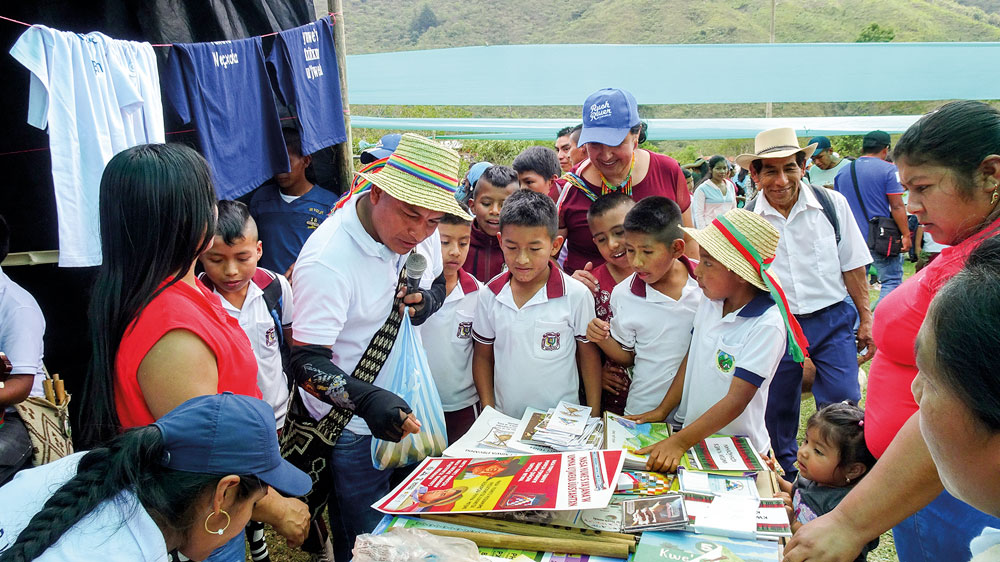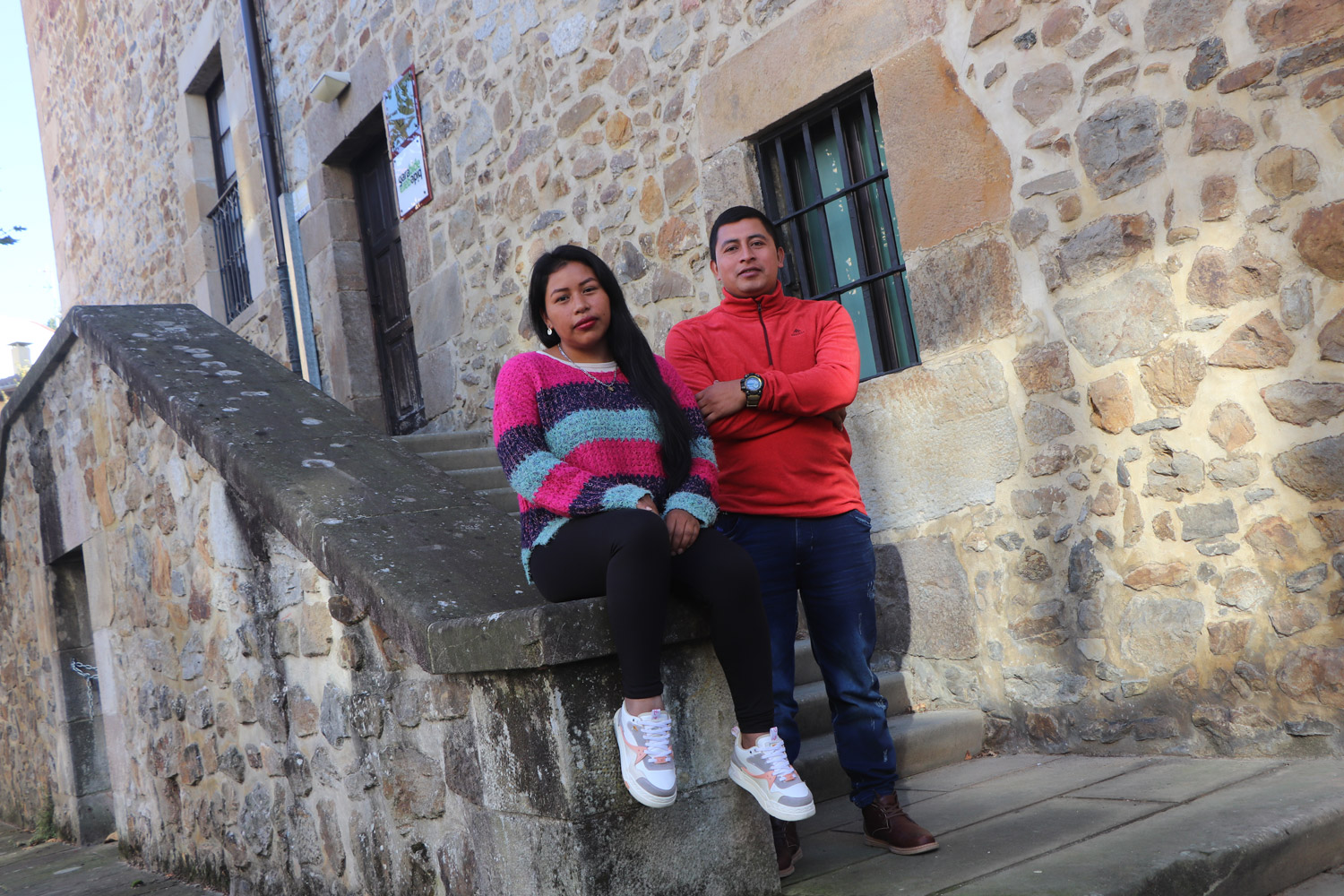Citizens have at their disposal the first book to learn the language
- The UEU Glotodidactic Counselor, Arkaitz Zarraga, and the Professor of the School of Magisterium of Begoña, Ane Ortega, know very well the process of recovering the language of the Colombian people of Nasa, who are participating in that path. Both spoke about the situation of the language and the experience in linguistic cooperation in the Hitz Adina Mintzo cycle, which took place on 14 December in Vitoria-Gasteiz.

In Colombia, the number of live languages is 65. One of them is Nasa Yuwe. It is a French town and commune, located in the department of Cauca, in the Andes. It's about 400,000 users, 140,000 of whom are NASA users, which is 35 percent of the total. Professors Zarraga and Ortega have developed their experience in the village of Tuunsiwxu-Toribio, a town of 32,000 people, where 30% are Yuwe speakers nasa. Zarraga and Ortega affirm that at the end of the last century the nasa yuwe was in a clear setback: “The school did not guarantee knowledge, NASA yuwe did not exist in most areas and functions of life. The prestige of the language was small, the speakers were not proud to speak in their own language, the transmission had been interrupted or was very advanced, it was not heard in the villages, the language did not appear in the landscape – everything in Spanish – and was Spanish even in the areas and events of the indigenous people”. And without a doubt, the desire to regain language emerged from the desire to live with dignity.
The Indigenous Territorial Council of Cauca, which together with the people of Nasa includes other peoples, set out to recover the lands and dignify the living conditions of the indigenous people. Through them, the Northern Indigenous Council Association came to create the “Nasa Yuwe Thread”, that is, to work on education, and from there to take into account linguistic and cultural objectives, to implement the model of immersion in nasa yuwe in Children and Primary, rooted in the global conception of the platforms. In the words of Zarraga and Ortega, “these schools are multiplying and are taking steps to make the NASA language yuwe have an increasing presence in other school models.” This has caused deficiencies and needs to emerge: learning materials, teacher training, cultural productions… and from there came directly the collaboration between Euskaldunes and nasales, channeled through the Garabide Association.

With the aim of reviving
Cooperation between the two peoples has focused on giving a determined impetus to the process of revitalizing the language. The decision, however, came from the platforms. Within the framework of “Nasa Yuweren haria”, 40 promoters were designated in 2011, i.e. linguistic agents. One of them participated in the Expert course organized by Garabide and since then the collaboration arose and so came the political and spiritual authorities of the people nasa to reflect on the planning of linguistic revitalization and to take some steps, tools and resources.
To begin with, they identified several lines of work: planning, immersion schools, adult education, cultural production, media, corpus and translation. These lines were elaborated by specific groups of promoters and members of the Basque Country. In 2018 they organized a 180 hour course in Tuunxiwxu-Toribio to share their knowledge with the other platforms: Diplomatura in strategies of linguistic revitalization applied to the Nasa community. The success reached the university, and in 2019, the Autonomous Indigenous Intercultural University organized a course with training to manage the processes of revitalization of the language: 23 professors nasa and ten Euskaldunes were the students' drivers. “In this last course, the presence of Yuwe Nasa grew enormously, the linguistic landscape is almost entirely in yuwez and almost all the teachers’ shelves taught the course in their own language.”
The work that both teachers do in Cauca, however, has had as main objective the teaching and literacy of adults, understanding that it is essential to guarantee the transmission of language, along with the schools of boys and girls, “that also adults who are not able to use the language acquire this competence. In addition, Nasa Yuwe is one of the passions most desired by the citizenry.” They had already made a number of experiences, but no tangible results. In it, “our first task was to reflect on the nature and objectives of adult schools.”

Adult education
However, from the adult school, the nests did not want them to be just places of language teaching, but to be agents to increase the use of NASA yuwe, especially among children and young people. Zarraga and Ortega, for their part, consider that adult schools can be very active for the language to take steps in new areas, such as corpus planning, administration, sports, media, trade, etc. In addition, “in all these areas Spanish has predominated”, we have been told.
However, in order for adult schools to become agents and agents of the community, it was essential to correctly diagnose the situation and analyze various factors for it. Zarraga and Ortega worked on four of these variables: “As there was no unified curriculum, we set ourselves the objective of representing and developing the right curriculum. Along with the reflection on the curriculum, we saw the need to unify the teacher training and the process of elaboration of didactic materials. To do so, it was essential to choose an appropriate methodological approach”. They opted for a methodology oriented to communication. “The communicative approach proposes that students learn to use language by promoting its use. It is also necessary to design the curriculum and to train teachers so that they can properly develop the curriculum.”
In the course 2018-2019 all the didactic units have been realized. Year later, the student's book to learn nasa yuwe is in the hands of the students: Kwe´sw yuwe´s piiywa´ Nyafx Fxidx. Along with the book, the teacher's book and audio-visual materials have also been edited and elaborated.
Great progress
Zarraga and Ortega have worked in Tuunxiwxu-Toribio for about eight years. In these years, the teaching of NASA yuwe has improved and, in addition, has increased pride in the language and visibility of it. “Today, at any party or assembly of the people, you hear the nasa yuwez. The linguistic landscape has also increased dramatically. Whatsapp also communicates more and more by nasa yuwez, and Facebook has also increased its presence. In many important events and celebrations, including the exchange market, work is continuously done from the public address in the nasa yuwez, and in the cards of the posts this language is also the predominant. Each school proudly shows its work in nasa yuw...”. They are undoubtedly the result of a long process in which Zarraga and Ortega have lived first hand: “In addition to summer stays, we have shared messages, tables, materials and video-meetings. Distance forces platforms to assume leadership and accumulate experience and skills. It has also been very gratifying to see that the new generations have joined this project in these years.” And yet, the work has not been done: we have to continue living, normalize the language in school, enter new areas, open the media window, open more adult schools...
Miller Correa ACIN-ÇWK elkarte indigenako kontseilaria zen. Asteartean identifikatu dute indigena nasek haren gorpua. Pertsona bat atxilotu dute hilketaren harira.

















